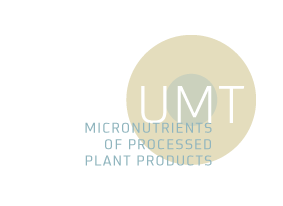
Coordination
Partners
Objectives
In line with the French National Health Nutrition programme (PNNS) recommendations on fruit and vegetable consumption, this unit aims to improve knowledge and construct tools to optimize the nutritional properties of processed fruits and vegetables, in order to promote technological innovation within businesses on the relationship between technology and micronutrients.
This is partly realised through the development of composition tables for some micronutriments, such as polyphenols, fibres and phytosterols, thanks to the development of specific analysis applied to processed products available on the market.
Another method is the study and modelling of changes in certain natural molecules of nutritional value in vegetable products subjected to technological processes.
This UMT is located in Avignon.
Actions
Resarch projects in progress along three major axes
Axis 1: studying and modelling changes in microconstituents, in particular during the heating stages of fruit and vegetable processing.
Carotenoids (including lycopene), polyphenols (phenolic acids, flavonols and procyanidins), vitamin C (ascorbic acid and dehydroascorbate) and vitamin E (tocopherols) are all being investigated.
The Réactial project (ANR 2007-2009) is the subject of a thesis on the prediction and testing of the appearance, or disappearance, of reaction markers during the processing and preserving of food products.
In 2009, the Demaveg project, concerning the impact of processing on the bioaccessibility of lipophilic vegetable micronutrients, also allowed for a thesis to be carried out.
Axis 2: participating in the enrichment of databases on the nutritional composition of food products, in particular the Anses/Ciqual databases.
The variability of content, linked to the varieties or the methods of processing, is analysed in order to increase the reliability and strength of databases. Analysis primarily concerns fruits and vegetables. To date, total and specific polyphenols (Polyphenol composition table project, Actia 2006-2009), as well as fibre, have been analysed.
Axis 3: developing technological innovation for nutritional quality.
The objective is to contribute to putting innovative food products on the market which are mainly made up of fruits and vegetables and possess better nutritional qualities (content or increased bioavailability in valuable microconstituents). These new products consolidate the attractiveness of fruits and vegetables.
The Tempantiox project (ANR 2008-2011) qualifies innovative procedures in order to propose fruit-based processed products for optimised organoleptic and nutritional qualities.
Research results are exploited via a strategy of active communication (publications, lectures, professional partnerships, etc.). Furthermore, this enables the construction of nutritional arguments in favour of processed fruits and vegetables, as much for manufacturers as for public health initiatives.





